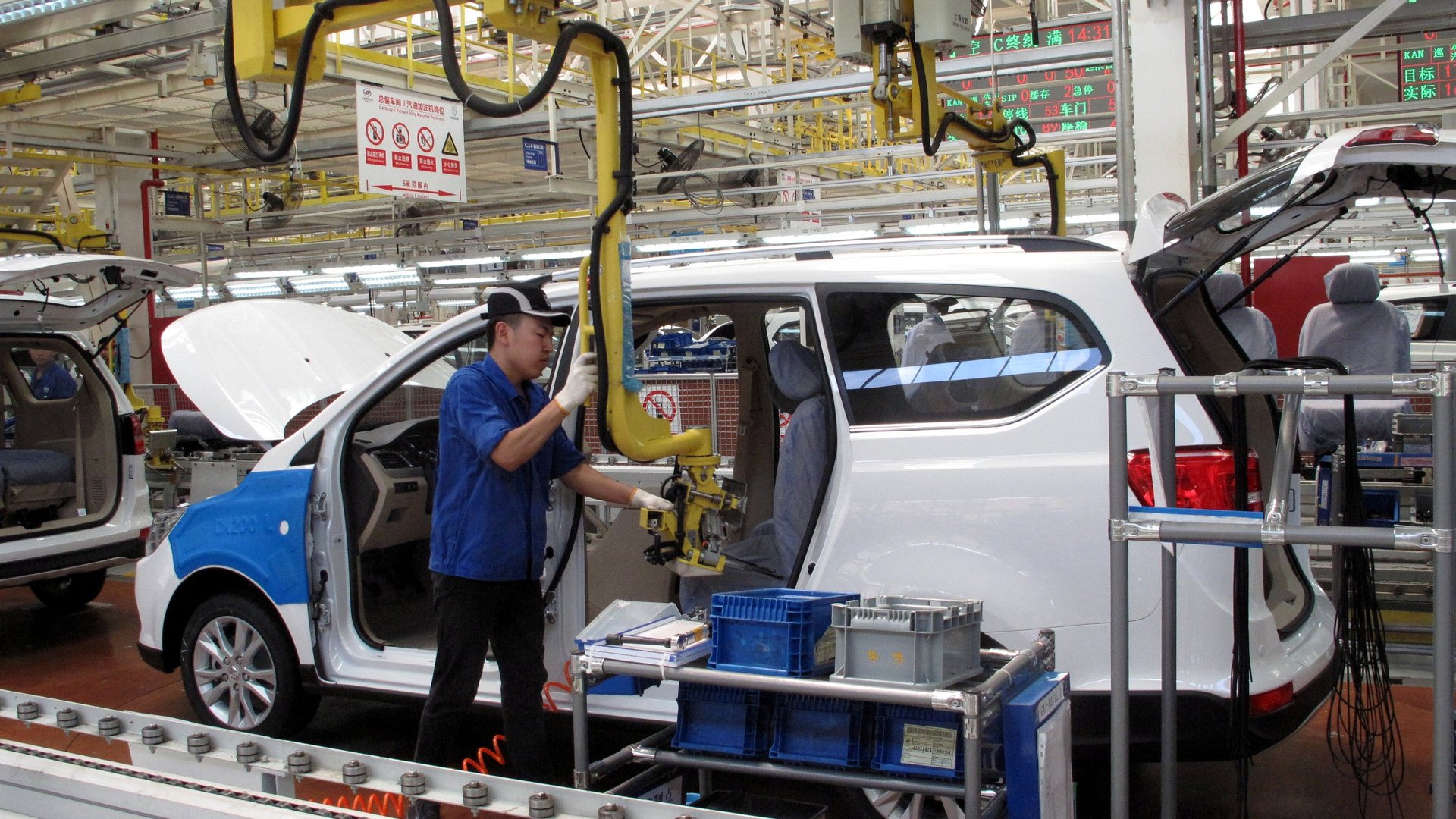General Motors is still China’s best-selling car maker
As China and the US announce competing plans to hike taxes on each other’s exports, threatening a trade war, it’s worth considering what trade actually looks like between the two countries.


As China and the US announce competing plans to hike taxes on each other’s exports, threatening a trade war, it’s worth considering what trade actually looks like between the two countries.
In 2017, as in 2016, the bestselling cars in China were made by General Motors. The company sold more than 4 million cars in China, worth over 14% of the total market. But many of those sales came from brands like Wuling, which are joint ventures mandated by the Chinese government and share capital—as well as intellectual property—between American automakers and Chinese partners.
The American automotive industry is desperate to tap into the huge market provided by Chinese drivers and the cheap parts manufactured there, even as Chinese automakers rush up the value scale to compete with established brands. But the US still has a slight edge in trade, despite the fact that China’s tariffs on new cars range from 21% to 30% compared to US tariffs of just a few percent:
It’s clear, however, that China is catching up, which worries US firms. GM, with ties on both sides of the Pacific, has weighed in carefully on the current dispute to support a “positive trade relationship.” Tesla CEO Elon Musk, always the id of his industry, has been clearer about what he’d like to see changed so he can sell more electric cars in Beijing and Shenzhen:
The trade rules underlying this economic relationship were expected to evolve over time as Chinese automakers became more competitive with US and European brands, with tariffs falling and rules about foreign investment becoming more relaxed. That hasn’t happened yet, but president Donald Trump’s threats have led Chinese leader Xi Jinping to re-emphasize previously planned trade concessions. What isn’t clear is if they will satisfy Trump.